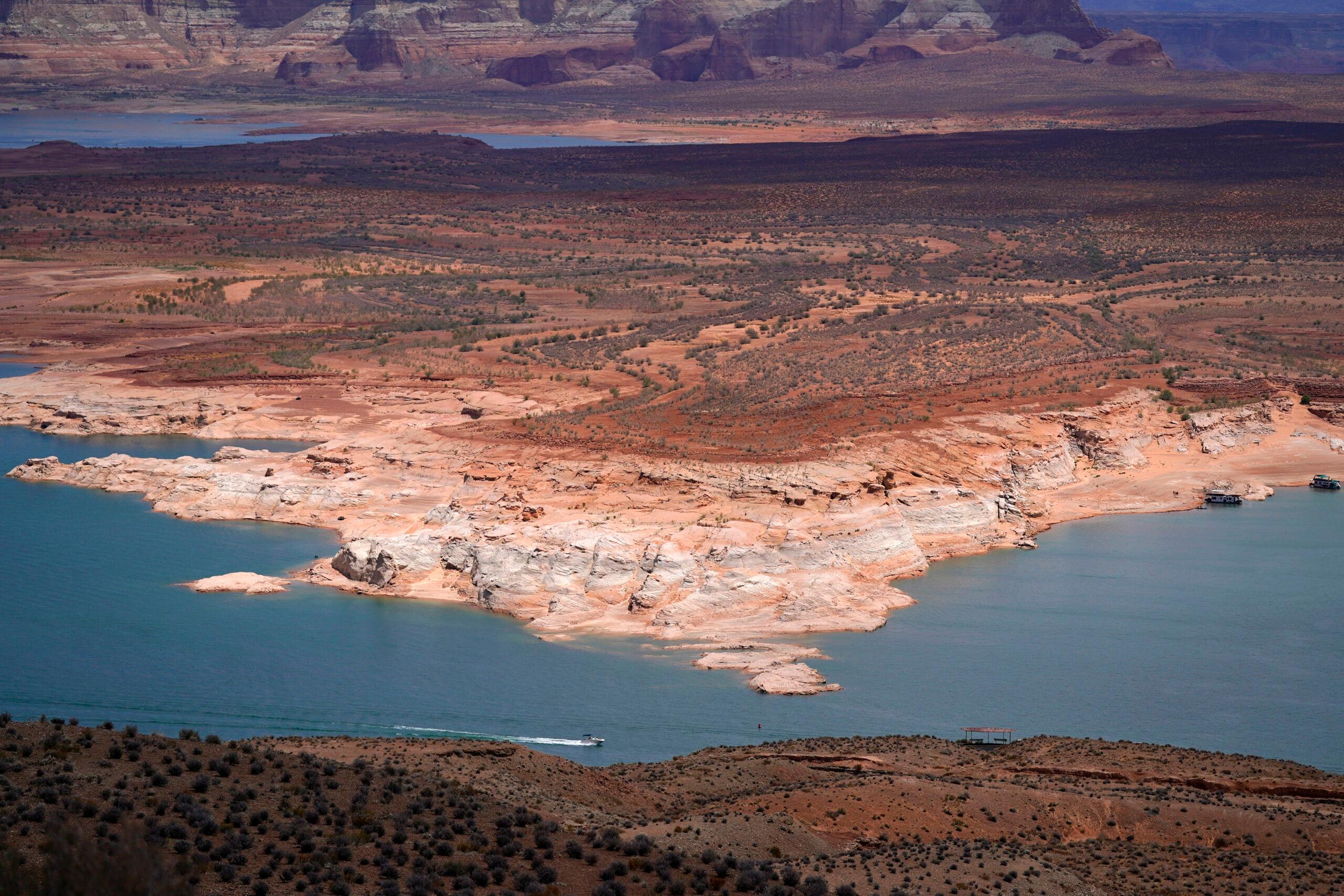
The Colorado River is the epicenter of the nation’s water and climate crisis, according to an annual report from the conservation group American Rivers that ranked the waterway the country’s most endangered.
“The eyes of the world have been on the Colorado for a couple years now as the system has been quite literally crashing,” said Matt Rice, the group’s southwest regional director.
More than 20 years of record-breaking climate change-driven drought has brought the river and reservoirs Lake Powell and Lake Mead to record lows. Last month, Lake Powell dropped below a critical threshold of 3,525 feet for the first time — a number the states and federal government have worked to avoid to keep enough water in the reservoir for continued hydropower production.
The Colorado River and its tributaries supply drinking water to around 40 million people. More than 5 million acres of farmland use this water for irrigation, and the Colorado River basin is home for 30 Native American tribes. The river flows through nine National Parks and is essential for healthy wildlife habitat.
The report highlighted how climate change and drought have affected the river but also faulted outdated water management practices for dwindling flows and low reservoir levels. Rice said the stakes are high, and more needs to be done to conserve the water that’s left. He said the basin states and the Biden administration must work urgently with the tribes and Mexico.
“We’ve made management decisions based on a river that hasn’t existed for a long time,” Rice said. “We have to use less water.”
American Rivers also released a list of strategies it recommends to adapt to a drier and warmer world. Rice wrote for the report that the scale and pace of climate-related changes in the Colorado River Basin “pose a gargantuan challenge, unprecedented in the history of water management.”
Those strategies include changes to how federal infrastructure dollars are spent, like prioritizing forest management, restoring natural meadow systems to improve water retention and aquifer recharge and covering reservoirs and canals to reduce evaporation.
The report also details how drinking water across the U.S. is affected by climate change and notes how communities of color often feel these impacts most acutely because of “historical and contemporary policies, practices and norms that maintain inequities.” The report also urges water managers to follow the lead of tribal nations and frontline communities that are advancing solutions for rivers and clean water. Tribes in the Colorado River basin have long pushed for more inclusion in how the river is managed.
Rice said the last time the entire Colorado River made the top spot was in 2013. But now, with reservoirs sitting at record lows, there’s no longer a buffer of water to protect the system.
“We can no longer manage our way out of this challenge, we need to invest in efficiency,” Rice said.









